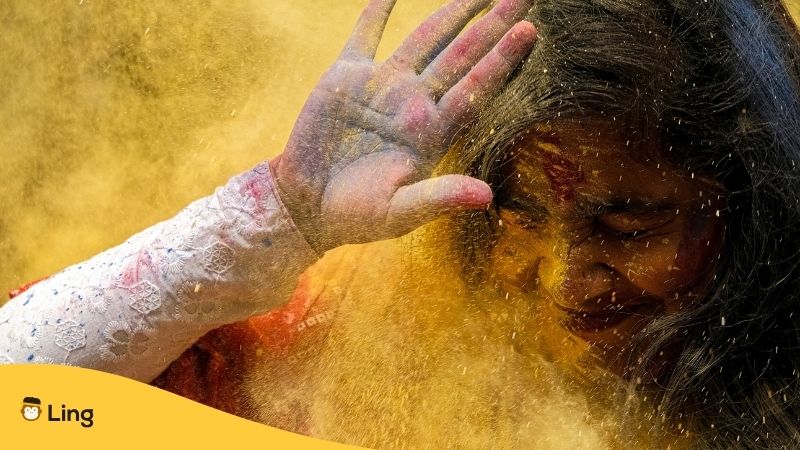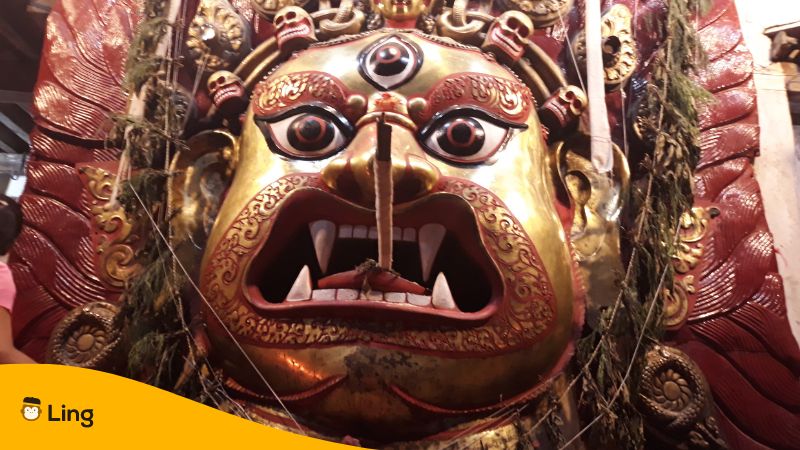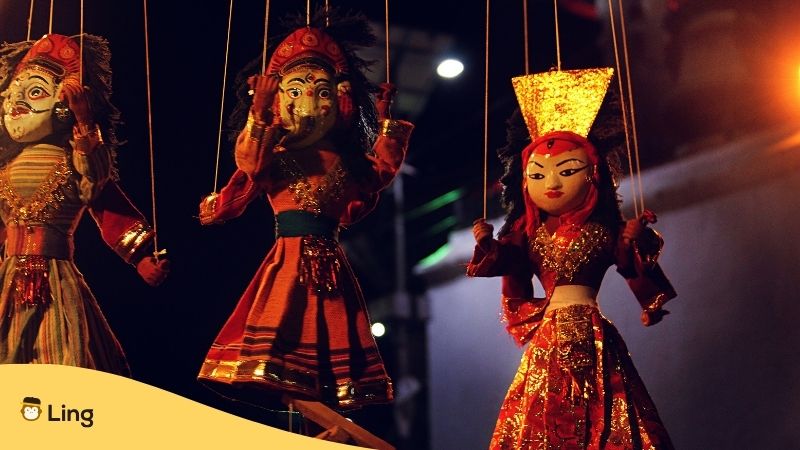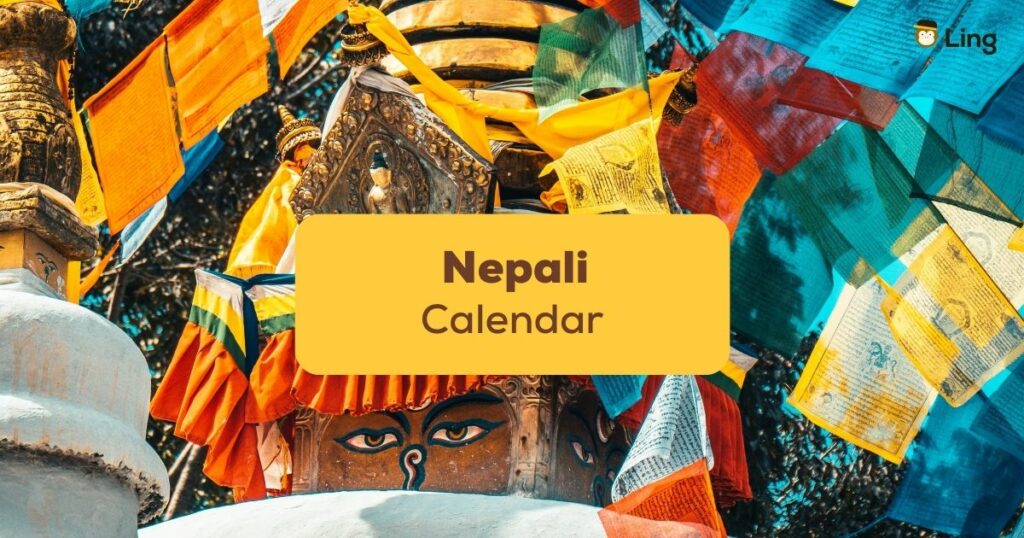The Nepali calendar, also known as the “Bikram Sambat” calendar, is a very different calendar from the one most of us will be familiar with. Unlike the solar Gregorian calendar, which is widely used in most parts of the world, the calendar in Nepal is based on the lunar system and holds great significance in the daily lives of Nepalese people.
So, let’s celebrate the uniqueness of the Nepali calendar by explaining its quirks and pulling out some important dates for our diaries.
A Brief History Of The Nepali Calendar
The Bikram Sambat Nepali calendar, also known as the “Nepali Patro”, is believed to have originated in the 12th century during the reign of Indian Emperor Vikramaditya, a legendary Hindu king known for his valor and wisdom. It is said that King Vikramaditya introduced this calendar to commemorate his victory over the “Shakas” (Scythians), and hence it was named after him. The official calendar follows the Hindu tradition and is deeply rooted in Nepalese culture and history.
The Bikram Sambat calendar is a lunisolar calendar, meaning it combines both lunar and solar components. It is made up of 12 months, each consisting of either 29 or 30 days, totaling 354 or 355 days in a year. To reconcile with the solar year, a leap month called “Adhik Maas” (extra month) is added every 3 years. This intricate system allows the calendar in Nepal to align more closely with the solar year, making it suitable for both religious and agricultural purposes.

Key Features Of The Nepali Calendar
The Nepali calendar’s months are determined by the phases of the moon, making it different from the English calendar, which is purely solar-based. Each month begins with the new moon and ends with the full moon.
The Nepal Sambat Calendar divides the year into 12 months, each named after a Hindu zodiac sign:
| Number | Georgian Month | Nepali | Transliteration |
|---|---|---|---|
| 1 | April-May | बैशाख | Baishakh |
| 2 | May-June | जेठ | Jestha |
| 3 | June-July | आषाढ | Ashadh |
| 4 | July-August | श्रावण | Shrawan |
| 5 | August-September | भाद्र | Bhadra |
| 6 | September-October | अश्विन | Ashwin |
| 7 | October-November | कार्तिक | Kartik |
| 8 | November-December | मङ्गसिर | Mangsir |
| 9 | December-January | पुष | Poush |
| 10 | January-February | माघ | Magh |
| 11 | February-March | फागुन | Falgun |
| 12 | March-April | चैत | Chaitra |
Each month consists of 30 “tithis” or days, but the last month, Chaitra, can have 31 “tithis’ if an “Adhik Maas” is not inserted.
Important Dates In The Nepali Calendar 2080
The Nepali calendar is chock full of important dates. Here are a few top picks for your diary:
Dashain
Dashain (दशैं), also known as Vijay Dashami, is the most significant Nepali holiday and widely celebrated festival in Nepal. It usually falls in September or October and lasts for 15 days. Dashain honors the goddess Durga and celebrates the victory of good over evil. Families come together, offer prayers, exchange blessings, and receive “Tika” (a mixture of yogurt, rice, and vermillion) and “Jamara” (barley shoots) from their elders. The festival is marked by feasting, animal sacrifices, and various cultural performances.
Tihar/ Deepawali
Tihar (तिहार – Tihāra), also known as Deepawali or the Festival of Lights, is celebrated over five days in October or November. Each day is dedicated to honoring different animals and deities, including crows, dogs, cows, and oxen. The last day, known as “Bhai Tika”, celebrates the bond between brothers and sisters. Houses are adorned with oil lamps, and rangoli (colorful patterns) decorate the courtyards.
Holi
Holi (होली – Hōlī) the festival of colors, is celebrated in March. Also known as Fagu Purnima, it is a time of merriment, when people play with colored powders and water, sing and dance, and exchange sweets and greetings. The festival symbolizes the triumph of good over evil and the arrival of spring.
Buddha Jayanti
Buddha Jayanti (बुद्ध जयन्ती – Bud’dha jayantī), also known as Buddha Purnima, marks the birth, enlightenment, and death of Lord Buddha. It usually falls in April or May and is celebrated with prayer flags, temple visits, and offerings of incense and lamps at Buddhist shrines and monasteries.
Indra Jatra
Indra Jatra (इन्द्र जात्रा – Indra jātrā) is a traditional Newar festival celebrated in Kathmandu Valley. It usually takes place in September and lasts for eight days. The festival is dedicated to the deity Indra, the god of rain, and includes various cultural performances, including the “Kumari Jatra”, where the living goddess Kumari is paraded through the streets of Kathmandu.

Ghode Jatra
Ghode Jatra (घोडे जात्रा – Ghōḍē jātrā), also known as the Festival of Horses, is celebrated in April or March. It involves a grand procession of horses and military displays at “Tundikhel”, an open ground in Kathmandu.
Janai Purnima And Raksha Bandhan
Janai Purnima (जनै पूर्णिमा – Janai pūrṇimā) is celebrated in August and is a sacred day for Hindus when they receive a sacred thread (Janai) from Brahmin priests. It is also the day when Raksha Bandhan (रक्षा बन्धन – Rakṣā bandhana) is celebrated, where sisters tie a protective thread (rakhi) around their brothers’ wrists, symbolizing their love and protection.
Maghe Sankranti
Maghe Sankranti (माघे संक्रान्ति – Māghē saṅkrānti) marks the winter solstice and is celebrated in January. It is a time when people take holy dips in rivers and eat traditional foods like sesame seeds and molasses. The festival is celebrated with enthusiasm in the Terai region of Nepal.
Shree Krishna Janmashtami
Janmashtami (श्रीकृष्ण जन्माष्टमी – Śrīkr̥ṣṇa janmāṣṭamī), the birth anniversary of Lord Krishna, is celebrated in August or September. Devotees fast, sing devotional songs and engage in reenactments of Krishna’s life, particularly the playful activities of his youth.
Lhosar
Lhosar (ल्होसार – L’hōsāra), the Tibetan New Year, is celebrated by the Tibetan community in Nepal. It usually falls in February and is marked by colorful processions, traditional dances, and the preparation of special dishes.

Pop A Date In Your Diary To Start Learning Nepali With Ling
Nepali is a beautiful language to learn. With Ling, you will be given all the tools necessary to master Nepali in no time. Why not give Ling app a try today at Google Play or the App Store?



































































